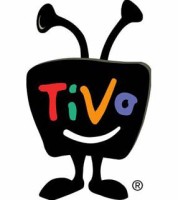Author: Tim Hawthorne
Direct response is all about getting consumers to take action. Pick up the phone, visit a website, respond to an ad on a mobile phone — these are all responses that direct marketers focus on as they develop campaigns. It just makes sense that quick response (QR) codes would have a place in a DR marketer’s toolkit.
First developed in Japan in 1994, these high-density, two-dimensional graphic images are basically just barcodes comprised of digital squares instead of bars. The composite of these ‘squares,’ often looking like crossword puzzles on steroids, come together to create codes, which, in turn, house the data that are scanned by mobile devices. The devices quickly scan and digest the code’s information block, translating it into hyperlinks or text information.
QR codes are being used across a wide variety of advertising mediums — from magazine ads to television to billboards. They allow for easy tracking of offline marketing efforts, provide a new channel for direct sales, and help stretch advertising dollars. Using QR codes, for example, marketers can cultivate a bigger pool of VIP customers (who take the time to scan the codes into their phones) and educate consumers in ways that billboards or magazine ads or 30-second TV spots cannot, while increasing brand awareness.
QR codes are also good at getting consumers involved in key issues. To gain public support for the restoration of the Gulf of Mexico in the aftermath of the 2010 oil spill, for example, the Women of the Storm club in New Orleans launched a ‘Be the One’ campaign, based on QR codes that sent consumers to a mobile website where they could watch a video and sign a petition in support of Gulf restoration.
Retailers have also caught onto the value of QR codes. Macy’s has integrated the codes into its holiday advertising campaign and its spring fashion promotion. The ‘Macy’s Backstage Pass’ campaign delivers consumer-oriented video content (including fashion advice, tips, trends and inspirations) according to Marketing Daily. Customers who scan the QR codes gain access to 30-second films showcasing Macy’s celebrity designer partners.
The list of QR code users goes on: Best Buy uses them in its offline ads and in-store displays (once scanned, the codes send consumers to the retailer’s mobile product pages), while clothing retailer Lacoste offers a discount to customers who scan its QR codes, play an online arcade game, and then register after playing.
Simple and affordable to set up and administer, the QR code’s low barrier to entry makes these mechanisms attractive across a wide swath of advertisers. To ensure that your own campaign yields the best results, follow these three tips:
1. Define your goals first. Do you want to get more people to your firm’s website? Provide an instructional video? Give certain customers an inside, VIP look at new offerings? Collect registration information? Whittle it down to one or two specific goals and your odds for success will rise exponentially.
2. Focus on the call to action. Much like you would do with a DRTV campaign, develop a well-defined call to action (CTA) to support the goals you’ve identified. That CTA will reside next to the code itself and should be short and to the point. For example: ‘Scan this code to see our newest attraction,’ or ‘Scan this code for a special discount.’
3. Create a compelling landing page. The mobile landing page that consumers see when they scan the QR code should relate directly to the first two steps. Create a dedicated site that only QR code users can access and make sure the site functions well on all mobile handsets.
When assessing the campaign’s success, focus on the length of engagement time generated by the QR code. If consumers are spending several minutes (or more) on the page you’ve directed them to, you have a successful campaign on your hands. If not, it’s time to revisit your campaign, check your code’s scanability (an issue caused by the many different scanning apps and phones currently in use), re-craft your CTA, and try again.
Article Source: http://www.articlesbase.com/branding-articles/deciphering-the-qr-code-5941089.html
About the Author
Author of over 200 published articles, Tim Hawthorne is Founder, Chairman and CEO of Hawthorne Direct, a full service DRTV and New Media ad agency founded in 1986. Since then, Hawthorne has produced or managed over 800 Direct Response TV campaigns for clients such as Apple, Braun, Nikon,Time-Life, Nissan, Oreck, Bose, and Feed the Children, Tim is a co-founder of the Electronic Retailing Association, has delivered over 100 speeches worldwide and is the author of the definitive DRTV book The Complete Guide to Infomercial Marketing. A cum laude graduate of Harvard, Tim was honored with the prestigious ‘Lifetime Achievement Award’ by the Electronic Retailing Association (ERA) in 2006.

















